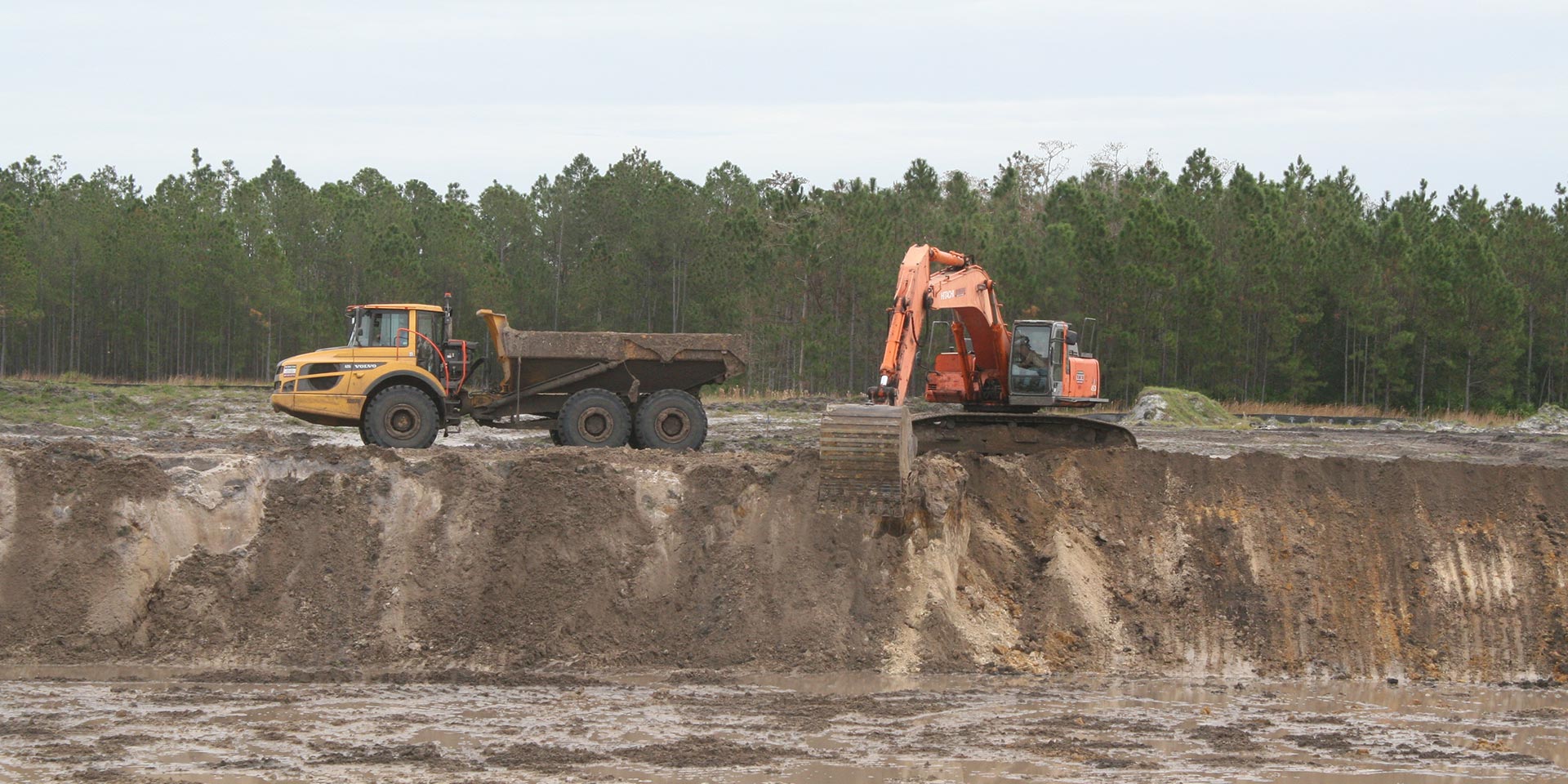At Home in Homes
Established more than 40 years ago by Fred and Eloise Good, Briar Construction and Paving, as it was known then, focused on construction of small commercial buildings and tennis courts. The company grew steadily and in 1984, was purchased by their son, Michael, and renamed The Briar Team. Today, the organization that started out so modestly has grown in both size and stature. Headed up by third generation family member Bobby Lee Good, The Briar Team employs more than 200 and has evolved into one of the region’s go-to site development companies. With area growth at a breakneck pace, the company has tackled some impressive projects, one of the most recent of which was the Homes at Mosaic project for ICI Homes mentioned above.
“The entire site is roughly 500 acres in size and we were doing two phases that were about 80 to 90 acres apiece,” said Tony Camacho, Briar’s senior survey crew chief. “In just those two phases, we moved more than 1.2 million yards of soil onsite. In addition to clearing, we did all the utilities, storm, sewer, water, reuse, we built at least ten different roads, poured all the curb, built the lot pads — it was total site development in every sense of the word.”
Change in Attitude
Five years ago, a project workload of that size and complexity would have presented any number of challenges to The Briar Group. Most significant of those would have been the massive amounts of staking needed for the initial clearing and grading, for the curbs and roads, for each of the five ponds, and then for each house pad. Not so today.
Seeing the changes taking place with regard to GPS, machine control and the like, roughly four years ago, The Briar Team, began what would be an ongoing relationship with GNSS technology. It hasn’t looked back since.
“We saw the immediate savings that could be realized in layout time alone and knew that was a route we had to take,” said Camacho. “Our projects are generally all mid-sized and larger — rarely anything smaller than 50 acres — so layout has always been a headache. Knowing that we could do jobs like this with few if any stakes, was exactly what we were looking for.”
At a Crossroad
Working through geopositioning equipment specialists The Lengemann Corporation, The Briar Team made its move into GNSS-based machine control and, in doing so, arrived at a metaphorical place that today is known as “The Intersection of Infrastructure and Technology.” Here, at this conceptual crossroads, Topcon Positioning Systems provides industry professionals with the expertise to be at the forefront of technological innovation and reap the benefits via increased productivity and profitability. And The Briar Team had those benefits on full display at the Mosaic project.
“We use GPS for a lot of different things, and at the Mosaic site we used it right out of the gate to set silt fence,” said Camacho. “Doing so with GPS is fairly uncommon, because we are generally dealing with wooded areas which can affect the instrument’s signal. But this site was wide open, and the silt fence line ran roughly 30 feet off the woods, so we had no problems.”
To illustrate how impactful that move was, he said that Colin Stiger, one of their survey party chiefs, staked about 6,000 feet of fence in one day, an effort that, done conventionally, would have involved a lot of calculations, turning and traversing. “It also probably would have taken a three-man crew nine hours to get what he did by himself in six,” he said. “That, alone, was a nice savings.”


















